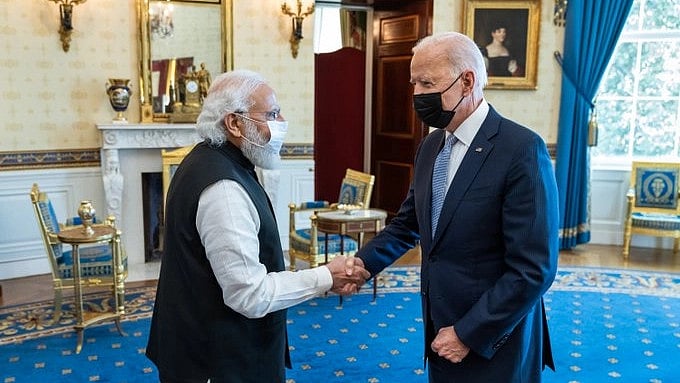It is good both for India and the US that they have shed their old antipathies and reservations and are now beginning to do business together. Admittedly, the catalyst might be the strategic threat that a rising military and economic power such as China poses to the diminishing influence of the US, still by far the most powerful nation in the world. Yet, India, one of the fastest-growing developing countries facing a serious threat from its northern neighbour which increasingly behaves like a new hegemon on the global stage can do with the American partnership in defence and other strategic sectors. Particularly when India’s long-standing ally, Russia, under Vladimir Putin has frittered away its influence in global forums and seeks the hand of China to bolster its cause. Though India had begun to cut back on its dependence on Russia for sourcing its defence needs several years ago but following the growing bonhomie between Moscow and Beijing, New Delhi needs to tread carefully in a situation where its interests directly clash with Beijing. How far Putin’s Russia will go to stand by India in an armed confrontation with China is not clear.
On the other hand, it is absolutely clear that the US will stand by India as a reliable partner in such a situation. Truth be told, if India was able to blunt the challenge of China at the time of the 2020 Galwan clash it was also due to the ready and critical assistance in technological and militarily crucial inputs provided by the US. The ideological hang-ups of the Nehruvian decades when anything connected with the US was a stern no-no is now a thing of the past. Which is a hugely positive development for the success of the on-going Indian progamme to make the country self-reliant in defence.
It is in this context that the recent two-day visit of US Defence Secretary Lloyd Austin ought to be viewed. Its timing ahead of the prime minister’s state visit to the US later this month is significant. The high point of Austin’s negotiations with his Indian counterpart, Rajnath Singh, was the proposed technology transfer for the manufacture of General Electric’s F414 engines for powering advanced fighter jets. Apparently, the Biden administration has green-lighted 100% technology transfer but there may be some hurdles in the US Congress. However, given the bipartisan appreciation of the Chinese threat in the otherwise thoroughly polarised US polity, chances of the move to transfer the technology for the joint production of the advanced jet engines in India seem bright. Indeed, it may be the high point of the PM’s visit to the US. That a country which for long has struggled in vain to develop its own engines for the indigenously manufactured Tejas Light Combat Aircraft — and has had to fall back on GE’s F 404 engines — may now be planning to actually produce the most advanced GE414 engines, underlines the vast distance India and the US have covered to meet each other as trustworthy partners; partners but not allies.
For, India still follows its own independent policy, the most telling example being its plain refusal to join the US-led Western bloc to sanction Russia after the latter’s invasion of Ukraine. Instead, India has emerged as a major buyer of Russia’s sanctioned petroleum products along with China at a discounted price. In an earlier era, when the US was the lone superpower and faced no threat either from China or Russia, such defiance of its foreign policy interests would have earned India a slap on its wrist. Now, sidestepping India’s autonomous relations with Russia, the US seeks cooperation with India, be it in the Quad aimed at ensuring freedom of navigation in the Indo-Pacific waters or in asserting territorial sovereignty of smaller nations sharing boundary with China. In short, keeping an increasingly expansionist and adventurist China from mischief in open skies, seas and on ground is the shared aim of the US and its other western partners which are alarmed at the bullying tactics of Xi’s China. Besides, despite the overt Nehruvian tilt in favour of all things Soviet-Russian, it is common knowledge that Indians are more favourably inclined to share cultural and economic ties with the US-led Western world. As we said, India and the US are not allies, but they can be close partners for the mutual good of the two nations. The upcoming Modi visit to the US is expected to further bring the two countries and its peoples together.







